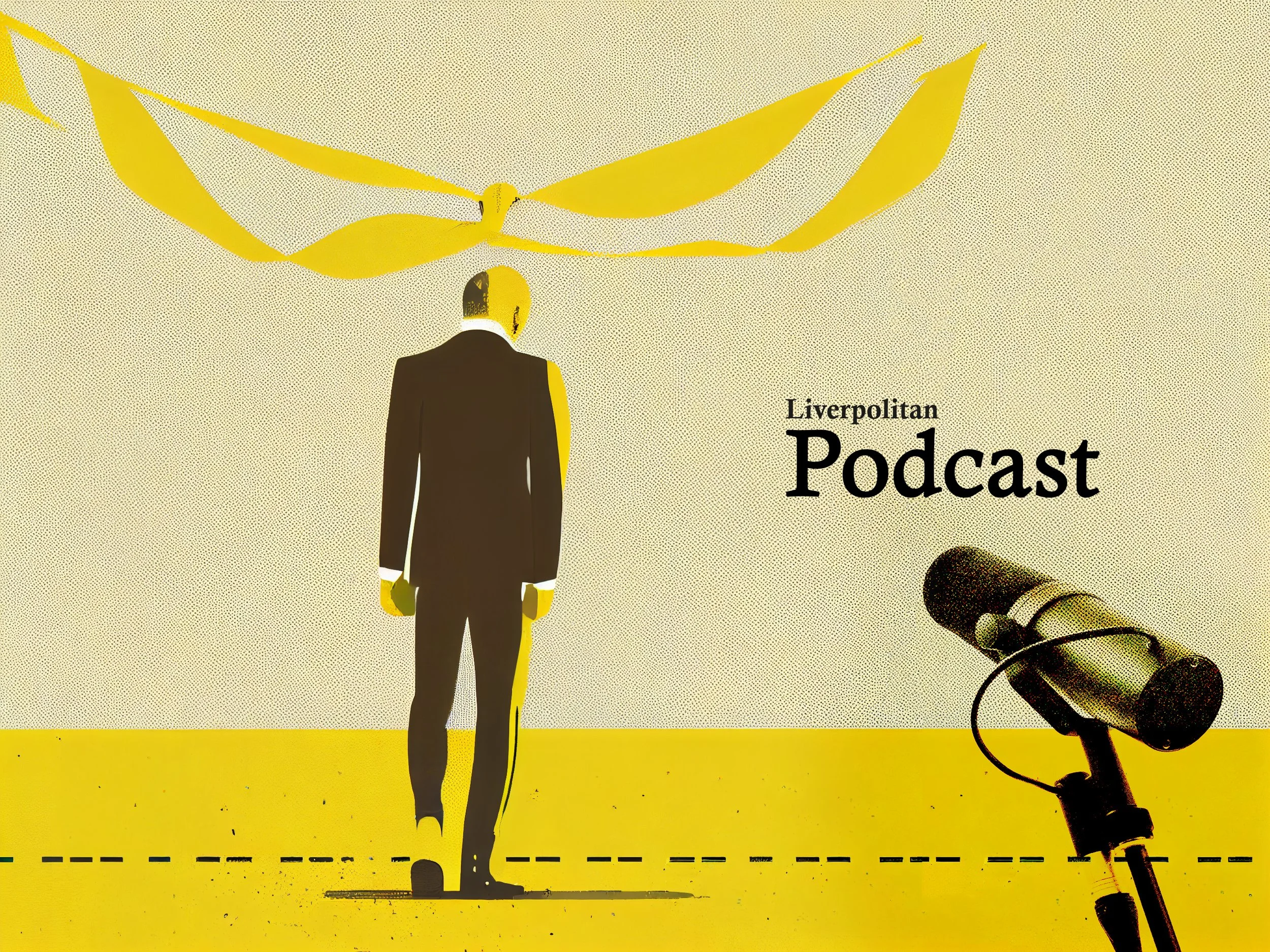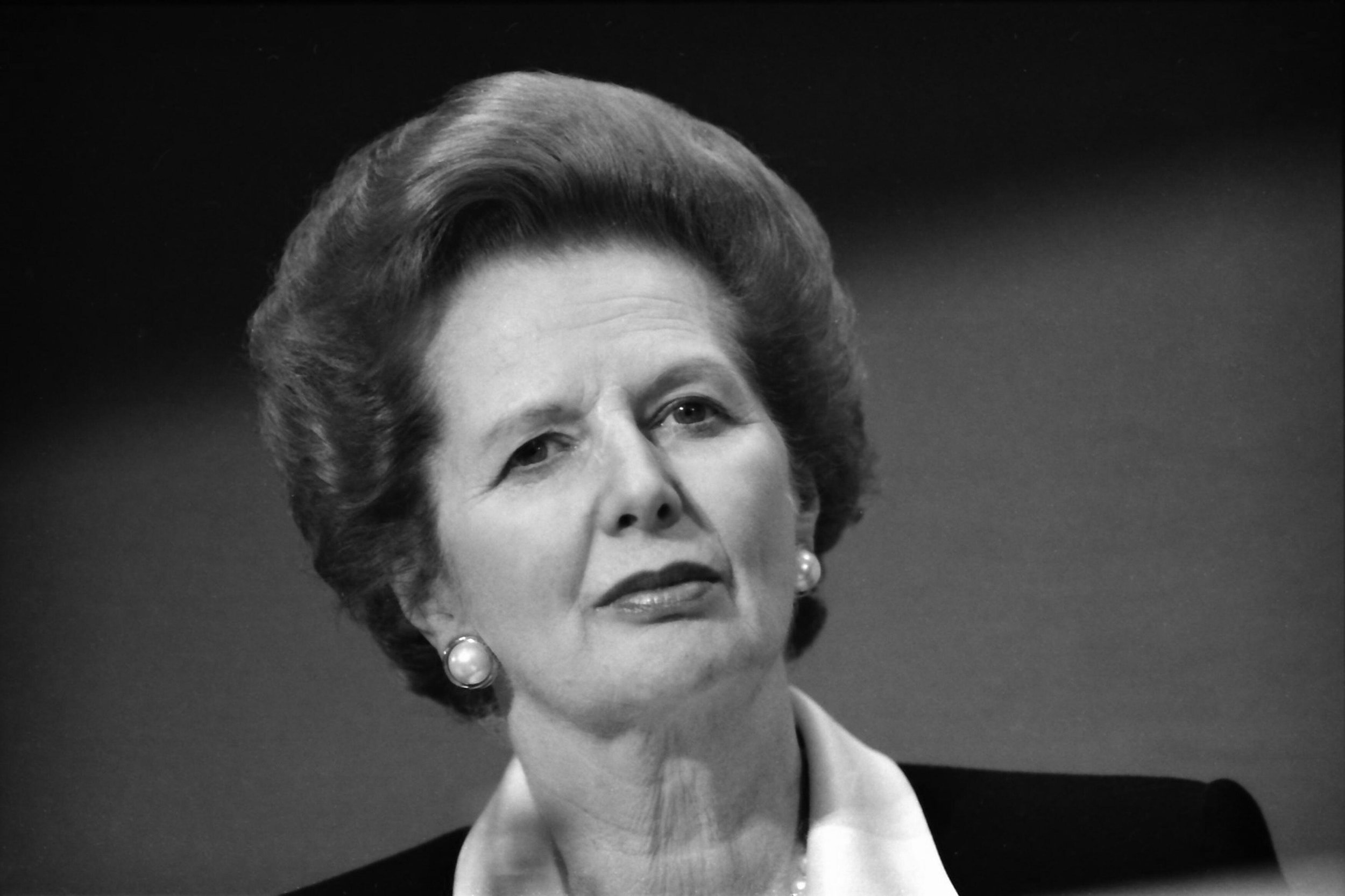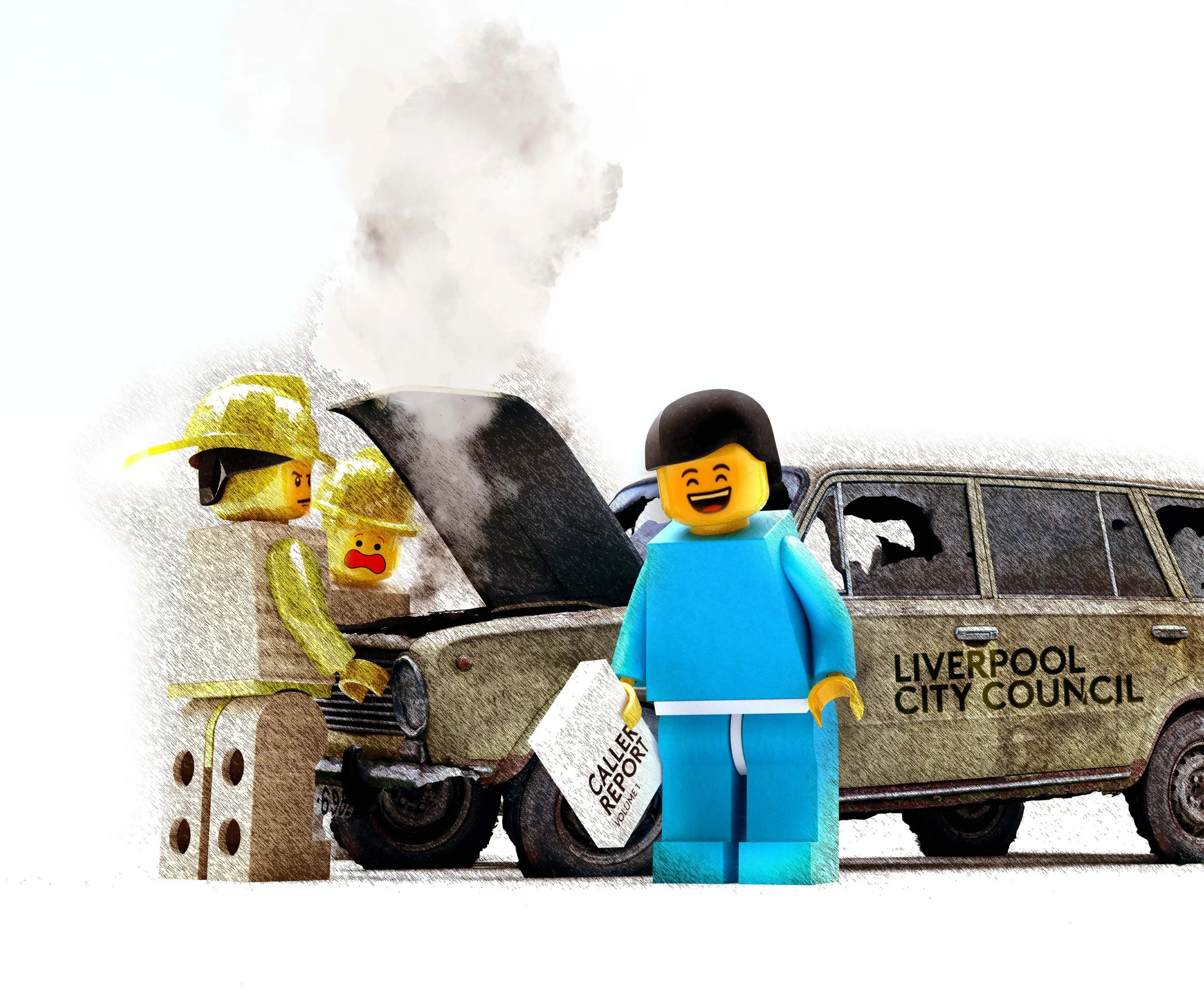Recent features
What next for the Wirral Waterfront?
As a child I found Wirral, and Birkenhead in particular, to be a deeply mystifying place. I knew that Ireland, where we went on holiday, was across the water, but where exactly was this other place? It wasn’t Liverpool, but was it even England or maybe Wales, or some strange liminal place existing outside my primitive geographical understanding?
Jon Egan
As a child I found Wirral, and Birkenhead in particular, to be a deeply mystifying place. I knew that Ireland, where we went on holiday, was across the water, but where exactly was this other place? It wasn’t Liverpool, but was it even England or maybe Wales, or some strange liminal place existing outside my primitive geographical understanding?
My earliest journeys across the Mersey did little to dispel Wirral's sense of disquieting otherness. The deep, dark descent into the underworld of the Mersey Tunnel only reinforced its obvious detachment from humdrum reality. This must be the other side of the looking glass.
Years later during my counter-cultural phase, and in the spirit of Parisian Surrealist explorations, we’d take “the metro” to Birkenhead in search of the merveilleux. Birkenhead’s numinous aura was only magnified by the eerie absence of people, the monumental grandeur of Hamilton Square echoing the ominous emptiness and abandonment of Giorgio de Chirico’s metaphysical city scapes.
In later years my associations with Birkenhead became more prosaic and practical through involvement in a succession of aborted regeneration initiatives and "visionary" but unrealised masterplans. Spending days talking to frustrated residents and world-weary stakeholders I was struck by their sad fatalism, as if the town had been subject to some strange and enervating enchantment. As Liverpool’s cityscape was magically transformed before their very eyes, Birkenhead seemed frozen in a state of suspended animation akin to Narnia trapped in its perpetual winter.
But of course there was nothing supernatural about the decline of Birkenhead. Once styled the City of The Future, Birkenhead has a proud and pioneering history. In addition to its global shipbuilding prowess, it’s the town that built the UK’s first public park, its first Municipal College of Art as well as Europe’s first tramway. Birkenhead’s curse is a toxic blend of economic decline and disastrous urban planning, making Birkenhead a place that’s easier to pass through than get to. Whilst cars, people and investment pass Birkenhead by, it’s tempting (and partially true) to point the finger at poor leadership and botched planning. But is there another more fundamental reason for the town’s baleful situation? Is it rooted in Birkenhead and Wirral’s deeper crisis of identity?
Regeneration has to be informed and framed by a sense of place - a clarity of purpose and identity. Without an existential paradigm regeneration is likely to be a series of disconnected and arbitrary interventions, very often aiming to undo the unforeseen consequences of a previously failed intervention. Birkenhead shopping centre is a palimpsest of flawed visions and ham-fisted initiatives. It is still just about possible to discern the archaeological remnants of what was, once upon a time, a high street (Grange Road), dissected, butchered and disfigured by ugly and already half-redundant modernist protuberances . This is town planning re-imagined as self-mutilation.
In 2001 Wirral Council attempted to resolve the peninsula's ambiguous identity with a bold, but alas unsuccessful bid for City Status. This was always a difficult proposition to sell given the uneasy relationship between the borough's urban Mersey edge and its bucolic hinterland. If Wirral isn't a city, then what is it? A municipal construct? A geographical descriptor? A lifestyle aspiration? Is it one place or an amalgam of places with quite different characteristics, histories and identities? It is difficult to suppress the suspicion that the failure to arrest the decline of its distinct urban centres has something to do with their slow immersion and disappearance into an amorphous and confused abstraction. It's little wonder that a Council without a settled sense of identity (its fractious communities historically divided about whether they should have an L or a CH postcode), should struggle to formulate or deliver a coherent regeneration vision. To borrow a Marxist analogy, Wirral's debilitating dialectic needed a resolving synthesis - and happily they found one.
‘Downtown Birkenhead needs to re-orientate itself and define its future in relation to an already burgeoning Liverpool City Centre…’
The Wirral Local Plan (currently awaiting Government approval) ingeniously united the borough's disparate communities and political factions with a strategy to vigorously defend its greenbelt and direct all new housing development onto urban and brownfield sites. Implicit in the plan are two revelatory and foundational propositions.
1) Wirral is not a homogenous place - its Mersey edge is a connected urban strip that is qualitatively different from the pastoral commuter settlements west of the M53. (Income disparity between the borough's most deprived and affluent areas is greater than in any other UK local authority area.
2) The history, identity and future of the urban edge is umbilically connected to the place it stirs out at across the Mersey (but sometimes thinks exists in a different hemisphere) - it’s Liverpool’s Left Bank.
Wirral's Left Bank vision was a new regeneration narrative to reposition and re-imagine the Mersey shore, but is also the core strategy against predatory housebuilders’ determination to challenge the no passaran defence of the greenbelt. However, this defence would only be sustainable if Wirral could make the Left Bank a sufficiently attractive and commercially rewarding location for the scale of building necessary to meet the borough's new homes requirement.
And herein lies the challenge. From New Ferry to New Brighton, the Left Bank littoral has, in recent decades - with one gloriously idiosyncratic exception (more later) - been a virtual regeneration exclusion zone. Turning what is often perceived as Liverpool's down at heel urban annexe into a thriving regeneration powerhouse is a challenge requiring exceptional presentational and practical capabilities.
The presentational brief has been curated by an impressive creative team, combining the branding and visualising expertise of designer, Miles Falkingham with the editorial acumen and eloquence of Birkenhead writer, David Lloyd, The Left Bank mood board, flawlessly realised in the eponymous digital and print magazine, presents a richly fertile incipient oasis, pregnant with possibilities and welcoming to innovators, prospectors and the independently inclined.
Birkenhead Dock Branch Park, conceptual visualisation.
The Left Bank
As a destination for the discerning, Left Bank is a counterpoint to a Right Bank (Liverpool) whose identity and character is being lost under the stultifying uniformity of the standard regeneration model.
But the Left Bank idea is more than a cleverly crafted re-branding exercise. It is also a set of values and sign posts to inform the delivery of what is potentially Wirral's most transformational regeneration windfall. Birkenhead 2040 outlines a radical vision for a re-imagined Birkenhead town centre underpinned by a series of successful Levelling Up and Town Deal funding awards totalling £80 million.
In 2016, following on from my involvement in a consultation on yet another undelivered regeneration project, I was one of a small group who produced an unsolicited document sent to Wirral's then Regeneration Director, entitled Manifesto for Downtown Birkenhead. A call to arms, it's opening paragraph set out the key challenge and imperative:
"Downtown Birkenhead needs to re-orientate itself and define its future in relation to an already burgeoning Liverpool City Centre. Reaching out and strengthening its sense of proximity and connectedness will be vital in attracting the energy, activity and people that are currently absent from a once vibrant centre."
The content was a series of ideas offered or identified during our conversations with stakeholders, or arising from immersive wanderings around a town rich with unique and under-utilised assets. The ideas included creating the region's best urban market, transforming the abandoned Dock Branch railway into Birkenhead's "low-line" and creating a venue for the town's burgeoning new music scene. In 2019 a Festival of Ideas, held as part of Wirral's Borough of Culture programme rehearsed these and other possibilities that would become the anchor ideas for the successful funding bids.
But with both the ideas and funding to deliver transformational change, doubts are emerging as to whether Birkenhead may once again squander a golden opportunity. Following a flurry of key officer departures, including Alan Evans, the Regeneration Chief widely credited with delivering the successful funding bids, concerns are growing that the Council lacks the organisational capacity and technical skills to translate tantalising visions into tangible realities.
‘…it’s something that people would be willing to get off a train for.’
More worrying still, it is now highly probable that pragmatic imperatives will lead to the abandonment of one of 2040's flagship projects. When visionary Dutch architect Jan Knikker was engaged in 2015 by Liverpool developers, ION, to feed into their Move Ahead, Birkenhead masterplan, the possibility of an urban market as unflinchingly radical as his Rotterdam masterpiece became a beguiling statement of ambition. After all, Birkenhead had been a market town, and a re-imagined, relocated modern urban market was the one thing Liverpool didn't have to offer. In the words of Birkenhead Councillor and Wirral Green Party Co-Leader, Pat Cleary, "it’s something that people would be willing to get off a train for."
Citing spiralling costs, the proposal for a new market on the site of the former House of Fraser store at the interface between the St Werburgh's Quarter and the proposed Hind Street residential quarter, would now appear to be dead in the water. A proposal to move the existing market traders into the former Argos store in the Grange Precinct, which is owned by the Council, is being presented as a smart value for money solution that turns a vacant liability into a source of much-needed revenue.
For Cleary, this would be more that the death knell of one of 2040's most transformational projects, it would signify, in his words the replacement of a genuine "regeneration perspective by an asset management mentality." For Cleary, the future of the market is emblematic. If one piece of a coherent jigsaw can be removed, where does that leave projects like Dock Branch Park that could just as easily begin to look expensive and expendable. His is not a lone voice, Birkenhead MP, Mick Whitley, called on the Council to reaffirm its commitment to the new market, warning that the revised option "would mean years of work up in smoke." Following a fraught Council meeting on December 6th, it appears these concerns are unlikely to be heeded. Although officers were instructed to investigate two other options including refurbishing the existing market hall, the House of Fraser site looks likely to remain a boarded up monument to failed ambition.
Others intimately involved in the evolution of the 2040 vision are also worried that the integrity and spirit of the 2040 vision could be lost in delivery. Liam Kelly, whose Make CIC organisation is a key partner in the delivery of the proposed creative hub in Argyle Street, is willing to accept the need for pragmatism, but favoured a less costly iteration of the existing plan on the proposed site, explaining, "it doesn't have to be expensive to look great." For Kelly, the litmus test for 2040 overall will be the Council's willingness to sustain the coalition of stakeholders and co-creators who have worked with the Council in shaping the vision. As the various funding strands are blended and the overall delivery architecture is refined, Kelly believes, it's about "having the doers around the table and how difficult decisions are made" that will safeguard the integrity and deliverability of the 2040 blueprint.
‘Seeing the tragic and seemingly inevitable decline of the once vibrant Victoria Street, local entrepreneur, Dan Davies, embarked on a uniquely eccentric and joyous regeneration adventure.’
With a final decision on the market project now scheduled for February, the omens point increasingly in the direction of Argos. Both Cleary and Kelly stress the much bigger picture perspective that is somehow absent from the beancounting calculations underpinning the Argos proposition. Without a radically different and vibrant Birkenhead town centre, the viability and credibility of plans to build thousands of new homes on brownfield land at Hind Street and Wirral Waters becomes highly questionable. With Leverhulme Estates already launching a legal challenge in support of their plans for 800 greenbelt homes, the pressure on the Local Plan, and the fragile political consensus underpinning the Left Bank idea, may begin to exhibit destabilising cracks and fissures.
Away from Birkenhead there is another equally worrying indicator that when push comes to shove, pragmatism and asset management logic may be taking precedence over a commitment to the Left Bank aesthetic. There is no known precedent or template for the extraordinary regeneration story of Rockpoint and New Brighton. Seeing the tragic and seemingly inevitable decline of the once vibrant Victoria Street, local entrepreneur, Dan Davies, embarked on a uniquely eccentric and joyous regeneration adventure. Buying up empty and semi-derelict shops, he commissioned internationally renowned street artists to execute a series of spectacular murals celebrating the history, culture and identity of the town memorably dubbed, The Last Resort, by photographer Martin Parr.
This was not just about a lick of paint or a superficial facelift to cheer the spirits. Davies's restless energy and obsessive Canute-style audacity has reversed the tide of decline by bringing new businesses, cafes, venues, an art gallery, pub, recording studio and performance space to make Victoria Street possibly one of the most visually and creatively eclectic high streets in this part of England.
With an offer that caters for every demographic - from disadvantaged young people to socially isolated older residents - the breadth of Rockpoint's improvised and quirky inclusivity was perhaps most perfectly expressed in Hope - The Anti-Supermarket. Occupying the thrice-failed food store, Rockpoint transformed the unit into a multi-use space for artisan and independent retailers, social events, comedy, music and local am-dram performances. At a time when communities everywhere are witnessing a diminution of social capital and public space, Davies was delivering, under one roof, the kind of outcomes that 2040's proposed "creative" and "wellbeing hubs" can only promise. In a baffling decision, Wirral Council chose not to extend Rockpoint's tenure of the building, opting instead for the revenue rewards of a hardware store. Hadn't they read the magazine?
The Left Bank idea is an astute piece of positioning, and with an intelligently targeted and resourced campaign, it’s a necessary component in differentiating Wirral's offer, and guiding its regeneration direction. But the Market and Anti-Supermarket case studies also highlight the fragility of mood board-based regeneration, especially when those ineffable and immeasurable subtleties don't convert easily into the hard currency of public sector fiduciary imperatives.
But perhaps there is another flaw in a strategy that fails to distinguish between necessary and sufficient causation. Paris's Left Bank is not simply the bohemian haunts of the Latin Quarter and St Germain-des-Pres and nor is London's South Bank just Borough Market and its trendier residential enclaves. To return to Pat Cleary's challenge, what will make enough people get off the train, or even decide to put down roots in the new urban neighbourhoods envisaged in Birkenhead and the Left Bank? To be more than the One-Eyed town, doesn't Birkenhead need (and deserve) its equivalent of The Musee D'Orsay or Tate Modern? At the conclusion of the Manifesto for Downtown Birkenhead, we posed a question - shouldn't the town that invented public parks and pioneered mass transit reclaim its capacity for innovation and ambition?
“Important places are home to important institutions.... Far from being frightened of big ambitious ideas, we need to encourage them, test them and ultimately deliver them.”
Does 2040 lack the scale of ambition and impact necessary to deliver the catalytic stimulus that Birkenhead requires? Conceiving and delivering projects of that magnitude (including the discreetly mooted V&A of The North) and integrating and re-balancing the two banks of what a casual visitor might mistakenly believe to be one city, is a task that probably necessitated the invention of a City Region and a Metro Mayor.
In fairness to Wirral, the authority has been especially ravaged by the impact of austerity, hollowing out its core capacities and stretching services to breaking point. This is a difficult time to navigate the uncharted terrain of delivery, and the pressure and temptation to find pragmatic compromises may be difficult to resist.
In difficult and demanding circumstances, Wirral has formulated a complex and highly integrated planning and regeneration prospectus, an edifice where big picture objectives are founded on detailed and precisely crafted plans and projects. When Councillors meet to make a final decision on the future of Birkenhead Market in February, they may need to consider whether this is the moment to play a particularly precarious game of jenga?
Jon Egan is a former electoral strategist for the Labour Party and has worked as a public affairs and policy consultant in Liverpool for over 30 years. He helped design the communication strategy for Liverpool’s Capital of Culture bid and advised the city on its post-2008 marketing strategy. He is an associate researcher with think tank, ResPublica.
*Main image: Eszter Imrene Virt, Alamy









































